1. Overview about Phu Quoc Prison
Phu Quoc Prison is the clearest example of the resilient struggle of the Vietnamese people against the crimes of the enemy. Although the war has passed, what happened here is still an obsession every time it is mentioned.
Phu Quoc Prison Relic is located at 350 Nguyen Van Cu Street, An Thoi Commune, about 28 km from the center of Duong Dong Town, Phu Quoc. During the Indochina War, this prison was called Cay Dua Prison. This is the central prisoner of war camp in the whole Republic of Vietnam, having held more than 32,000 soldiers.
In 1995, Phu Quoc Prison was recognized as a national historical relic by the Ministry of Culture and Information. Since then, the prison has become an ideal tourist destination and it attracts many tourists. The barbaric crimes are reproduced in detail, which is the clearest evidence for the cruelty and fierceness of war.
- Opening hours: 8 am to 11:30 am and 1:30 pm to 5 pm
- Ticket price: Free. However, if visitors want to listen to historical stories, the tour guide rental price ranges from 100,000 – 200,000 VND in one session
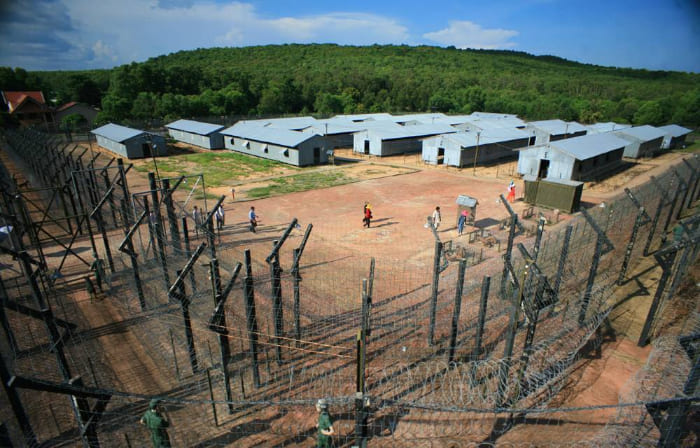
2. The history of Phu Quoc Prison
2.1. Phu Quoc Island Prison during the French colonial period
2.1.1. The biggest prison of Southeast Asia
In 1946, the French colonialists occupied Phu Quoc to build the largest prison in Southeast Asia. The prison at that time had an area of about 40 hectares and was divided into 4 zones A, B, C, D. This place is extremely strictly guarded, surrounded by barbed wire fences and security lights. The patrols are fully armed. The prison had about fourteen thousand prisoners, most of them men, in April 1954. Here, under the brutal torture of the French colonialists, 99 communist soldiers died.
2.2.2. Geneve Agreement
France gave Vietnam the powers to run the prisons when the Geneva Agreement was signed in July 1954. But, the nightmares later became more horrible and brutal at Cay Dua prison.
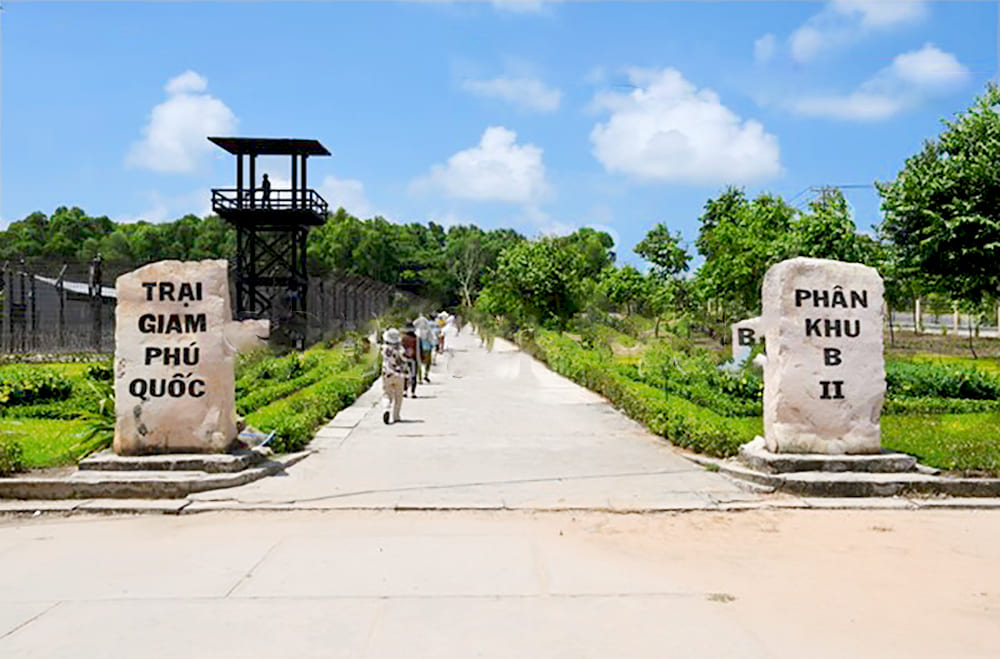
2.2.3. Cay Dua Prison during the American period
At the end of 1955, a new prison was built in the old Cay Dua prison with an area of about 4 hectares, divided into male, female and elderly quarters. During this period, Phu Quoc prison had thousands of people died, tens of thousands of people were injured and disabled by cruel tortures such as nailing to the forehead, to the knee or barbed-wire tiger cage…
3. Experiences to visit Phu Quoc prison
3.1. How to move to Phu Quoc Prison?
Phu Quoc Prison is about 29 km south of Duong Dong town, so visitors can easily travel by motorbike, car or bus.
To move to the place from Duong Dong town, visitors need to follow Cach Mang Thang 8 street, turn left at DT45 street and keep going until they meet the fork. This is the address of Phu Quoc Sewing Machine. From the junction, visitors turn left onto DT47. At Ham Ninh roundabout, visitors turn left to DT46, go about 16 km to reach Cay Dua prison, Phu Quoc.
3.2. Experience visiting Phu Quoc prison
- Phu Quoc Prison is a very sacred and solemn historical site. Therefore, visitors to this place need to dress politely and neatly to avoid affecting the space and people around.
- If visitors bring food and water, they need to dispose of garbage in the right place, without affecting the general hygiene of the relic.
- Do not touch the exhibits on display
- Phu Quoc prison relic has a gift shop and a snack shop, visitors can buy food or gifts here.
- Visiting and learning all about Phu Quoc prison will take from 1 to 2 hours.
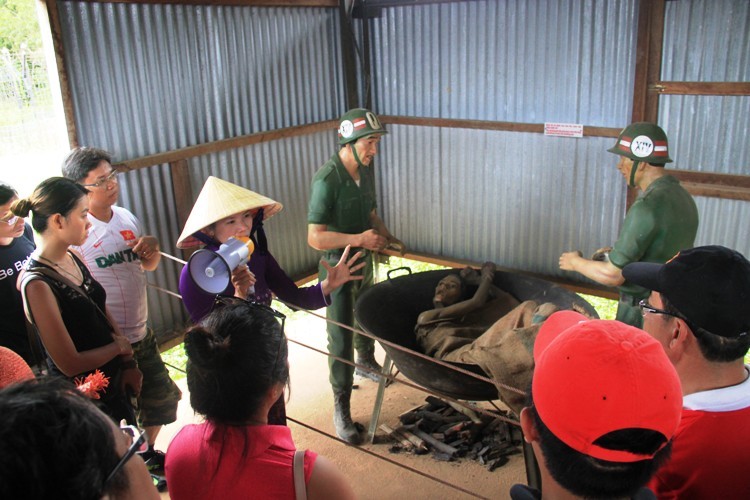
4. Phu Quoc prison tour guide
4.1. The Facilities of Phu Quoc Prison
When visiting the Phu Quoc prison historical site, visitors will be able to visit the prison’s infrastructure architecture. With an area of 400 hectares with nearly 500 houses divided into 12 zones, each zone has 4 subdivisions A, B, C, D, called Vietnam Communist Prisoner of War Prison.
Each division has 9 rooms for prisoners to live in and 2 rooms for interrogation or solitary confinement… All 11 rooms have iron truss structures, corrugated iron roofs, corrugated iron walls. Each room is 5 meters wide, 20 meters long, about 8 inches wide and each side of the corrugated iron wall has 4 windows, under the corrugated iron wall there is a gap of about 3 inches, with a barbed wire fence.
To guard the prison area, around each prison cell, there is a guarding fortress with machine guns; at the main gate of the prison, there are 2 guard posts, a watchman in charge, the guard takes turns every 2 hours, continuously 24/24 hours; 2 cars patrol continuously around the detention area and 10 mobile guard posts.
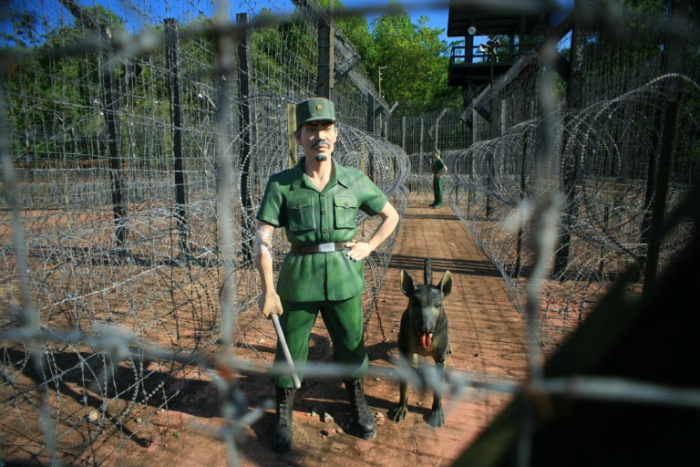
4.2. Highlight destination of Phu Quoc Prison
- B2 Subdivision
B2 Subdivision is the place to recreate the old Phu Quoc prison, with effigies of prisoners and soldiers to create realism when visiting. Visitors can see, hear and feel the pain both physically and mentally of the prisoners while being held here. Here, the colonial government used more than 40 types of brutal torture to punish prisoners and revolutionary soldiers.
- Barbed-wire tiger cage
The barbed wire tiger cage is a barn made entirely of barbed wire, for the outdoors with a variety of tiger cages. Prisoners must lie in a cage, in the sun with an area of only 2m in length, 0.5m width. Surrounded by thorns, the prisoner could not move. This is one of the most brutal forms of torture.
- Solitary confinement room
Here, recreating the scene of the enemy torturing prisoners by nailing them to the head, putting them in a pan of boiling water, chiseling the prisoners’ teeth… Because of the brutal suppression of torture, many protests emerged here. Images of Vietnamese prisoners digging tunnels through the camp were also found and reproduced very vividly.
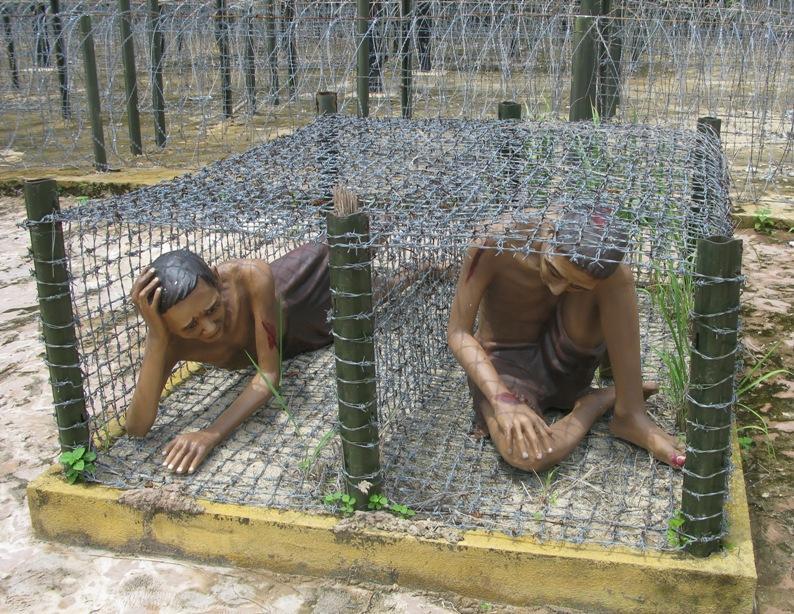
5. Conclusion
In addition to the beautiful natural beaches, the historical sites in Phu Quoc have been and are attractive destinations for all visitors to visit here. Phu Quoc Prison is the most realistic picture of the barbarism and brutality of the colonial empire. Through truthfully re-enacted stories and images, visitors can clearly feel the bravery and unyielding will of revolutionary soldiers during the difficult struggle period.
Contact us
Website: mettavoyage.com
Email: info@mettavoyage.com
Hotline 24/7: + 84 989 383 572

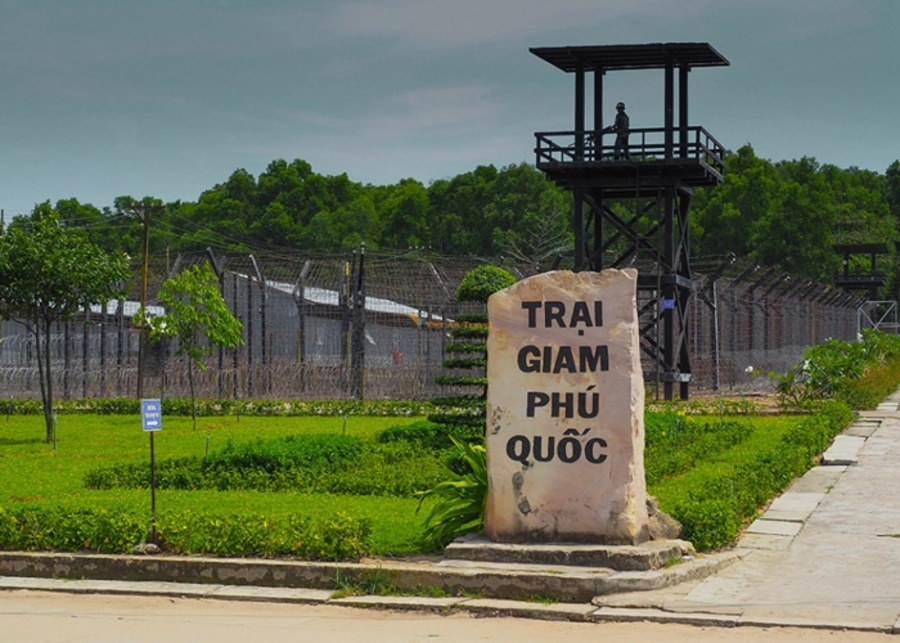

0 Comment